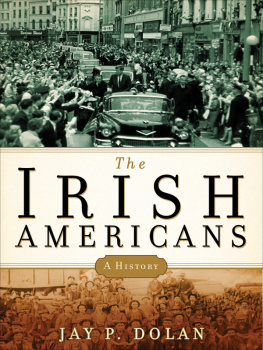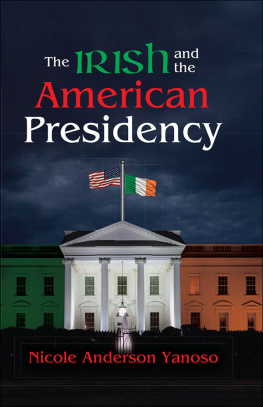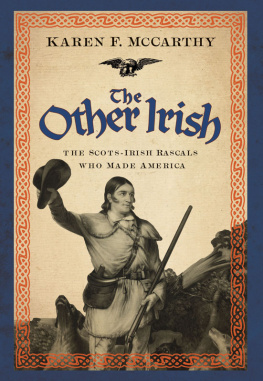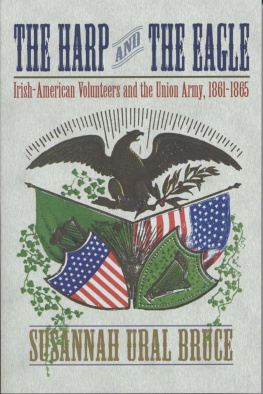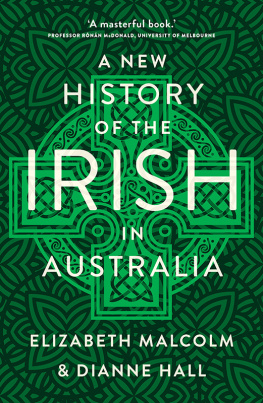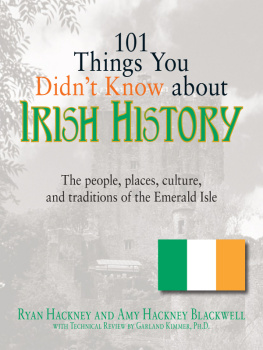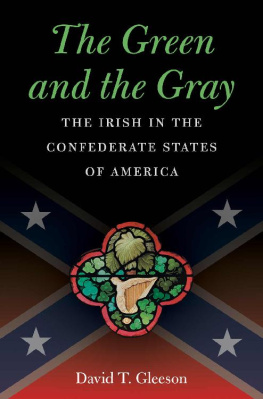The Irish Americans
Also by Jay P. Dolan
In Search of an American Catholicism: A History of
Religion and Culture in Tension
The American Catholic Experience: A History
from Colonial Times to the Present
Catholic Revivalism: The American Experience, 18301900
The Immigrant Church: New Yorks Irish and
German Catholics, 18151865
The Irish Americans
A History
JAY P. DOLAN
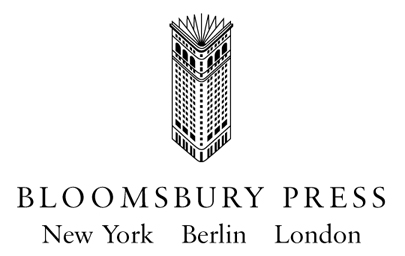
Copyright 2008 by Russ Baker
All rights reserved. No part of this book may be used or reproduced in any manner whatsoever without written permission from the publisher except in the case of brief quotations embodied in critical articles or reviews. For information address
Bloomsbury Press, 175 Fifth Avenue, New York, NY 10010.
Published by Bloomsbury Press, New York
LIBRARY OF CONGRESS CATALOGING-IN-PUBLICATION DATA
Dolan, Jay P., 1936
The Irish Americans : a history / Jay P. Dolan.1st U.S. ed.
p. cm.
Includes bibliographical references and index.
ISBN-13: 978-1-59691-419-3 (hardcover)
ISBN-10: 1-59691-419-X (hardcover)
1. Irish AmericansHistory. I. Title.
E184.I6D59 2008
973'.049162dc22 2008004476
First published by Bloomsbury Press in 2008
This e-book edition published in 2010
E-book ISBN: 978-1-60819-240-3
www.bloomsburypress.com
For Patricia
Contents
F or eighteen years I taught a course in Irish American history at the University of Notre Dame, home of the Fighting Irish. For much of my career I had focused on the history of American Catholicism. But teaching this course on Irish America kindled in me a desire to learn more about the history of Irish America. In many ways it was a love affair that intensified over the years. This experience inspired me to begin writing this book. William Shannons book The American Irish, published in 1963, was the last history written for the general reader. Clearly a new history of the American Irish was needed that would incorporate the work historians had done since the 1960s. The time also seemed right given the renewed interest in Irish culture and history both in Ireland and in the United States. So once I retired from teaching in 2004, I undertook the writing of this book.
I have organized the book in much the same way that I structured my undergraduate course by focusing on four major themes that have dominated Irish American historypolitics, religion, labor, and nationalism. But in one area these themes do not work so well: the eighteenth century. Until recently this has been the forgotten area of Irish American history. When thinking about the Irish in America, the Great Famine of the 1840s immediately comes to mind. For most people, this is when the story begins. Moreover, it was a Catholic story since the vast majority of the famine immigrants and those who followed them were Roman Catholics. But the history of Irish America begins in the eighteenth century, not the nineteenth, and it is not only a Catholic narrative but an Irish one that includes both Protestants and Catholics. The first two chapters cover this period, from 1700 to 1840. This remarkable history follows the Irish who settled along the rural frontier, where, as struggling farmers, they eked out a living by trading with Native Americans. By the late eighteenth century Philadelphia had become the capital of Irish Americathe gateway for many Irish immigrants who were traveling west to the frontier as well as the home of numerous merchants who had established a prosperous trading network with Ireland.
After the American Revolution and the birth of a new nation, the Irish continued to immigrate, but their numbers were not very great. Included among them were a number of political radicals who were forced into exile because of their outspoken opposition to Englands rule over Ireland. Mostly members of the middle class, they settled along the Eastern seaboard, where they kept alive the dream of Irish independence. Casting aside the bitter sectarianism that had plagued Ireland for so long, they dreamed of an Ireland where Irishmen and Irishwomen of all religious denominations were united in a common bond of nationhood. But the vast majority of immigrants in this prefamine period were not so irenic. Many of them were Catholics who brought with them a more sectarian, less inclusive attitude that contrasted sharply with the nonsectarian viewpoint of the middle-class political exiles.
Symptomatic of this change in attitude was the introduction of the term Scotch-Irish into the Irish American vocabulary. The term had been in use during the eighteenth century to designate the Ulster Presbyterians who had emigrated to the United States. From the mid-1700s through the early 1800s, however, the term Irish was more widely used to identify both Catholic and Protestant Irish. As long as the Protestants comprised the majority of the emigrants, as they did until the 1830s, they were happy to be known simply as Irish. But as political and religious conflict between Catholics and Protestants both in Ireland and the United States became more frequent, and as Catholic emigrants began to outnumber Protestants, the term Irish became synonymous with Irish Catholics. As a result, Scotch-Irish became the customary term to describe Protestants of Irish descent. By adopting this new identity, Irish Protestants in America dissociated themselves from Irish Catholics. The broader meaning of Irish, so prevalent in the colonial era, faded from memory. The famine migration of the 1840s and 50s that sent waves of poor Irish Catholics to the United States together with the rise in anti-Catholicism intensified this attitude. In no way did Irish Protestants want to be identified with these ragged newcomers. So they took on a new identityan identity, some boasted, that did not include a drop of blood of the old Celtic (i.e., Catholic) Irish.
This major transformation took place between the 1790s and the mid-1840s. As Irish identity changed, so did Irish American history. Henceforth, the label Irish would identify Irish Catholics exclusively. These are the people who occupy center stage in this book after the Great Famine, when 1.5 million Irish, the majority of whom were Catholic, immigrated to the United States.
The nickels and dimes of these immigrants helped to transform the Catholic Church into the largest and most feared religious denomination in the country. The Irish were born to rule, as one pundit put it, and they soon built powerful political machines in many cities. They were also in the forefront of the labor movement, leading the struggle for decent wages and humane working conditions. As Ireland strove to break free of English domination, its most ardent supporters were the Irish exiles in America. Each of these topicsreligion, politics, labor, nationalismis so vast that I dedicate a chapter to each one. Most of the book focuses on major American cities where the majority of the Irish settled. By the mid-nineteenth century, New York had replaced Philadelphia as the capital of the Irish. The Irish also traveled west to Chicago and San Francisco. Others moved to western mining towns such as Butte, Montana. As the narrative moves into the twentieth century, I continue the focus on the four major themes and the transformations that occur in each area. The final chapter discusses what I call the triumph of the Irish. By the 1960s they had become one of the best educated and most prosperous ethnic groups in the nation. They had come a long way since the famine era, when their ancestors had arrived with little more than the clothes on their backs, working as ditchdiggers, porters, and maids. What is equally remarkable is that Irish Americans have stayed Irish even while embracing their adoptive landan achievement that I seek to explain in the conclusion of the book.
Next page
